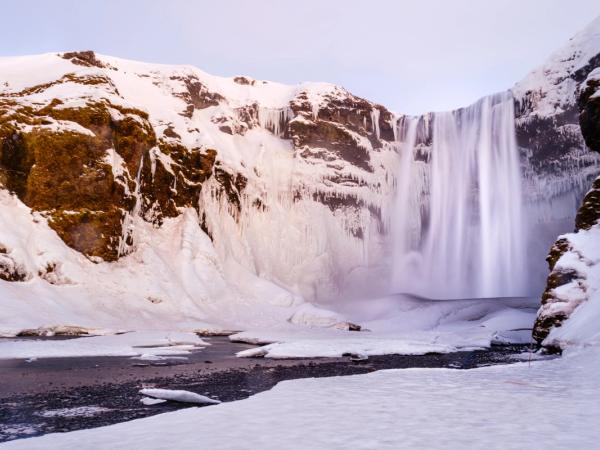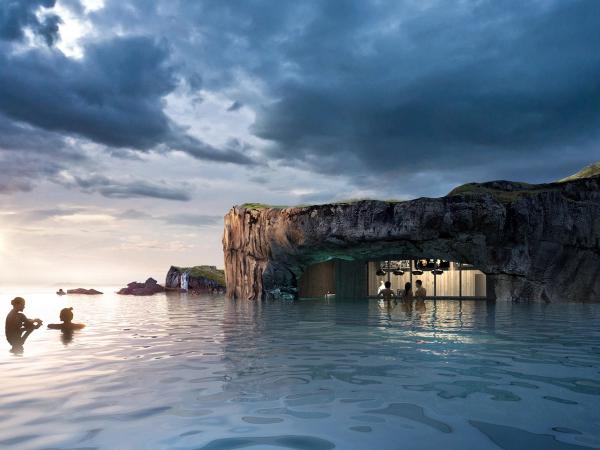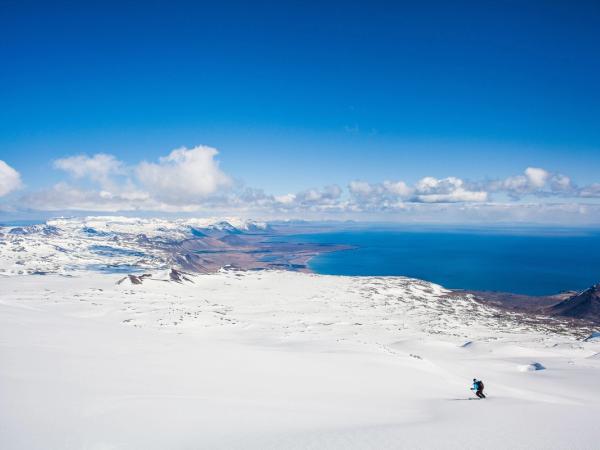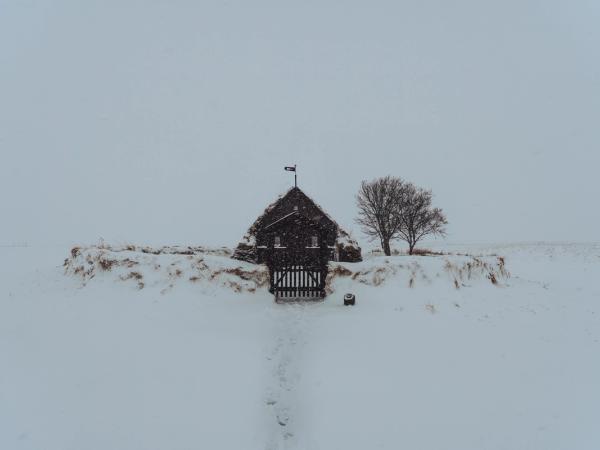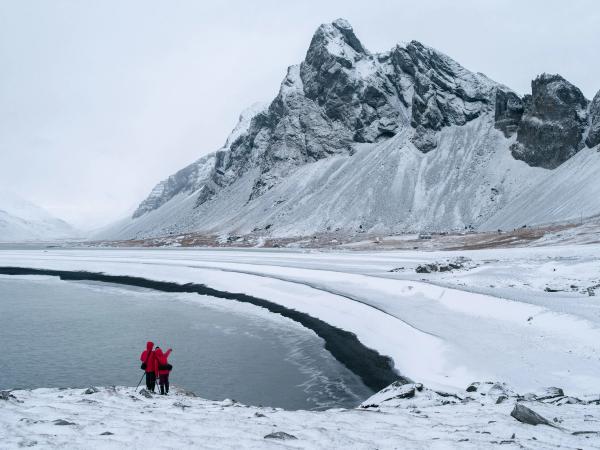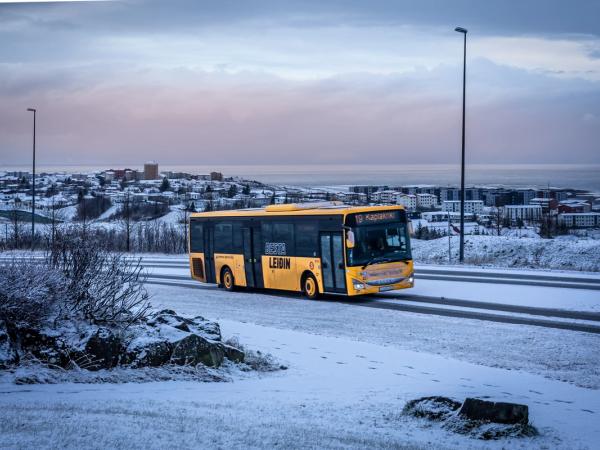
Winter in Iceland: Complete Guide for 2025-2026
Iceland in winter turns into a place of frozen waterfalls, Northern Lights, and steaming hot springs. Many travelers avoid cold destinations in winter, but Iceland in winter is worth the trip.
Key Takeaways
- Winter in Iceland (November-March) gives you chances to see Northern Lights, ice caves, and fewer tourists
- Temperatures hover between 20°F to 38°F (-6°C to 3°C), warmer than most people expect
- Daylight hours change a lot from just 4-5 hours in December to 10+ hours by March
- Winter driving needs planning, but roads near Reykjavik and the South Coast stay open
- Winter offers better deals with lower prices for places to stay and flights
Overview of Winter in Iceland
Winter in Iceland runs from November to March. It brings shorter days, snowy landscapes, and a different feel from summer. Popular spots look different in winter, and you can do things that aren't possible in summer.
Fewer people visit during winter, so you'll see smaller crowds at main sights. While daylight gets much shorter (especially in December), the darkness is good for seeing the Northern Lights and winter photos.
Temperatures stay around freezing in coastal areas like Reykjavik, usually between 20°F and 38°F (-6°C to 3°C). That's probably warmer than what you thought, and it's because of the Gulf Stream. But the weather can change fast, and strong winds often make it feel colder than what the thermometer shows.

Why Visit Iceland in Winter?
Iceland in winter is different from summer:
- Northern Lights: Winter has the dark skies needed to see this natural light show
- Ice caves: These blue crystal caves only form in winter and make great photos
- Fewer tourists: You'll have plenty of space at places like the Golden Circle and the Blue Lagoon
- Winter landscapes: See partly frozen waterfalls, black beaches with snow, and steam rising from hot springs
- Better deals: Find lower prices on places to stay, car rentals, and flights during the off-season
- Winter atmosphere: Experience Icelandic Christmas traditions, cozy cafés, and local celebrations
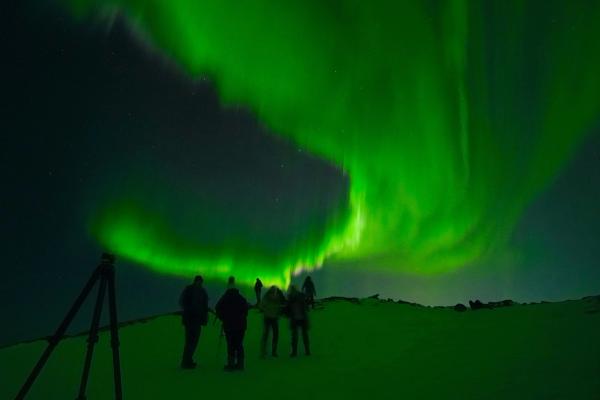
Weather
Iceland's winter weather isn't as cold as you might think. Thanks to the Gulf Stream, coastal areas stay fairly mild, while inland areas get colder.
The wind is often the real problem in Iceland, making even mild temperatures feel very cold. Winter storms can come quickly with strong winds and heavy snow or rain.
Main weather points:
- Temperature: Usually between 20°F and 38°F (-6°C to 3°C) in lower areas
- Precipitation: Expect rain and snow mixed, especially along the south coast
- Wind: Can be strong, making it feel much colder
- Daylight: Ranges from about 4-5 hours in December to 10+ hours by March
- Conditions: Weather changes fast – as Icelanders say, "If you don't like the weather, just wait five minutes!"
The south coast usually gets more rain and snow but stays warmer, while north Iceland often has clearer skies but colder temperatures, making the north good for Northern Lights viewing when conditions are right.

Things to Do
Despite the cold, Iceland offers many winter activities that showcase the country's unique beauty. From city exploring to natural wonders, here are some must-do things that make the most of Iceland's winter charm.
Explore Reykjavik
Iceland's capital looks great in winter with lights, cozy cafés, and cultural events. Visit Hallgrímskirkja church for crazy views of the city, see museums like the National Museum of Iceland and the Reykjavik Art Museum, and try the city's food. The Harpa Concert Hall has a glass front that looks amazing when lit up against dark winter skies.
Soak in Hot Springs
Sitting in hot water while snow falls around you is one of Iceland's best winter experiences. The Blue Lagoon is the most famous hot spring, but also try the Secret Lagoon (Iceland's oldest swimming pool), the newer Sky Lagoon with ocean views, or the natural hot springs at Reykjadalur Steam Valley, where you can hike and then sink into a hot river.
Chase Waterfalls
Iceland's famous waterfalls look different in winter. Seljalandsfoss and Skógafoss on the south coast become partly frozen, creating ice shapes. Gullfoss, part of the Golden Circle, looks strong even when partly frozen, surrounded by snow and ice. Be careful on viewing platforms, which can get slippery.
Discover Geological Wonders
The Geysir area looks striking in winter, with Strokkur erupting against snowy surroundings. Thingvellir National Park shows the split between the North American and Eurasian tectonic plates, with winter adding a special quality to this landscape. The black beach of Reynisfjara looks even better when covered with snow.
Explore Glaciers
Take guided glacier walks on Sólheimajökull or Skaftafell with local experts who give you gear for safe ice hiking. For an easier experience, snowmobile tours on Langjökull or Mýrdalsjökull glaciers offer fun and great views.
Things You Can Only Do in Winter
Winter in Iceland opens up special things that summer visitors miss. These seasonal activities are what make dealing with colder temperatures worthwhile, giving you memories and photos that summer travelers can't get.
Hunt the Northern Lights
Winter's dark skies create good conditions for seeing the Aurora Borealis. Join a guided tour from Reykjavik or drive yourself to dark places away from city lights. For best results, check aurora forecasts, look for clear skies, and visit between September and April. Good viewing spots include Thingvellir National Park, Jökulsárlón Glacier Lagoon, and areas around Lake Myvatn in the north.
Explore Crystal Ice Caves
These blue ice caves form only in winter, when glacier water freezes. The most famous ice caves are in Vatnajökull, Europe's largest glacier. Always visit with certified guides, as these caves can shift throughout the season.
Go to Winter Festivals
Experience unique Icelandic traditions at winter festivals. The Winter Lights Festival in Reykjavik (February) fills the city with light installations and events. The Christmas tradition of the 13 Yule Lads is cool to experience to learn more about Iceland's folklore firsthand. If timing works, experience Þorrablót in January/February, a midwinter feast with traditional Icelandic foods.
Try Winter Sports
While not known as a ski place, Iceland has small ski areas near Akureyri in the north and at Bláfjöll near Reykjavik. For more unique winter sports, try ice climbing on frozen waterfalls or snowshoeing across winter landscapes.
Overview of The Winter Months in Iceland
Each winter month in Iceland is different. From November's first snow to March's hints of spring, choosing when to visit depends on what you want to see and do.
November
November marks the change to winter, with temperatures usually ranging from 30°F to 40°F (-1°C to 4°C). You get about 5-8 hours of daylight, getting shorter as the month goes on. In November, the F-Roads are already closed, so access to the Highlands is very limited. On the other hand, late November offers great chances of seeing the Northern Lights. The first big snowfall usually happens, but coastal areas might still get rain rather than snow.
December
December brings the winter solstice and just 4-5 hours of daylight. Temperatures typically stay between 25°F to 36°F (-4°C to 2°C). December nights are good for the Northern Lights while towns are decorated for the holidays. Icelanders embrace the darkness with lights, candles, and gatherings. The unique Icelandic Christmas traditions, including the 13 Yule Lads and New Year's Eve bonfires and fireworks, make December a rich time to visit.
January
January is usually the coldest month, with temperatures between 21°F and 35°F (-6°C and 1°C). Daylight starts increasing (about 4 minutes per day), going from 4-5 hours early in the month to 6-7 hours by month's end. January is great for ice caves and Northern Lights. After the holiday rush, you'll find fewer tourists and better deals on places to stay.
February
February continues the cold but gives you more light, about 7-10 hours by the end of the month. Temperatures typically stay between 23°F to 36°F (-5°C to 2°C). February is good for winter activities with more daylight than December or January. The Winter Lights Festival in Reykjavik brings light installations and events that brighten the city. February is a great month to visit if you want a winter vibe, combining good conditions to see the Auroras with enough daylight for daytime activities.
March
March brings more spring-like conditions, with daylight increasing to 10-13 hours and temperatures between 28°F and 38°F (-2°C to 3°C). You can still do winter activities like ice caves (though they begin to close by late March) while enjoying more daylight for exploring. There's still a chance to see the Northern Lights, particularly in early March. The weather becomes more unpredictable, with a chance of both winter storms and spring-like days.
Driving in Iceland During Winter
While driving offers the most freedom for your Iceland trip, visiting in winter requires extra planning and care. Understanding road conditions, vehicle needs, safety measures, and alternatives will help you decide whether self-driving is right for your winter trip.
Road Conditions
Winter road conditions in Iceland vary widely depending on the location and the weather. The Ring Road (Route 1) and roads around Reykjavik are regularly cleared and maintained, but can still close during storms. Remote areas and highland roads (F-roads) are completely closed for winter, and driving them is illegal and dangerous.
Black ice is a major hazard, especially during freeze-thaw cycles. Snow can reduce visibility, and strong winds sometimes create sudden white-out conditions. Check road conditions daily using the Icelandic Road Administration website (road.is) or their mobile app, which gives real-time updates on closures and conditions.
Getting Your Car Ready
Rent a 4WD with winter tires. This is a must for safety. Check that your rental car has a spare tire, ice scraper, and emergency kit.
When picking up your rental:
- Check tire tread and condition
- Test all lights and wipers
- Learn how to use the heater and defrosters
- Ask about the vehicle's ground clearance
- Understand the insurance coverage (especially for winter-specific damages)
Keep the gas tank at least half full at all times, as gas stations in rural areas (if you can find one) may have limited hours or close unexpectedly during winter.
Staying Safe
Winter driving in Iceland is different:
- Drive slowly, especially on curves and hills where ice often hides
- Leave plenty of space between cars – at least 4 seconds
- Brake gently and early to avoid skidding
- Use lower gears when going down hills
- Keep headlights on all the time, even during daylight
Don't stop in the road for photos; use proper pull-offs instead. Check the weather forecast before heading out, and be ready to change plans if conditions worsen. Always let someone know your itinerary and expected arrival times.
Download the 112 Iceland app, which lets you check in with emergency services and send your location if needed. Carry emergency supplies including blankets, food, water, and a portable phone charger.
Other Ways to Get Around
If winter driving seems too hard, you have some alternatives:
- Guided tours: Day tours from Reykjavik cover major attractions like the Golden Circle, South Coast, and Northern Lights viewing
- Public buses: Connect major towns, though service can be limited in winter
- Domestic flights: Quick connections between Reykjavik and towns like Akureyri in the north
- Airport transfers: Direct shuttles between Keflavik Airport and Reykjavik
Staying in Reykjavik and taking guided day tours is a good option for those who are not comfortable driving in winter. You get expert guidance and forget about safety concerns.
7-Day Iceland Itinerary in Winter
This week-long itinerary balances must-see attractions with winter-specific experiences, making the most of daylight hours and accounting for weather conditions. It covers Iceland's highlights while giving enough time at each location.
Day 1: Arrival and Reykjavik
Land at Keflavik Airport and transfer to Reykjavik (45 minutes). Spend the day exploring the compact city center on foot. Visit Hallgrímskirkja church, walk along the harbor, and explore the National Museum of Iceland. Have dinner at one of Reykjavik's good restaurants and join a Northern Lights tour if conditions are good.
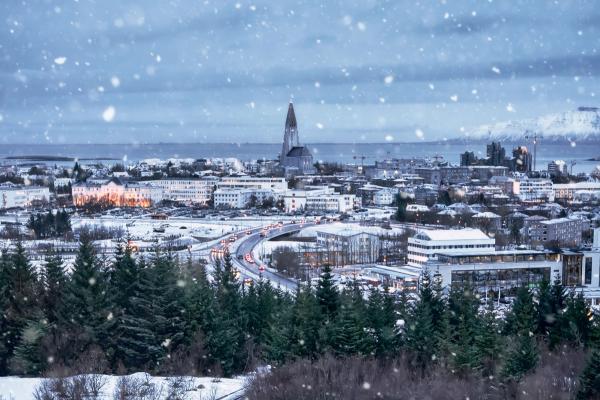
Day 2: Golden Circle
This classic route covers three major attractions: Thingvellir National Park (walk between continental plates), Geysir geothermal area (watch Strokkur erupt every 5-10 minutes), and Gullfoss waterfall. With winter's shorter days, start early and bring a headlamp in case it gets dark while you're outside. Add a stop at the Secret Lagoon or the Fontana Spa to warm up.

Day 3: South Coast Highlights
Drive east along the Ring Road to see Seljalandsfoss and Skógafoss waterfalls, both partly frozen in winter. Visit the black sand beach at Reynisfjara (stay well back from the waves) and the charming town of Vík. Return to Reykjavik or continue east to stay near Kirkjubæjarklaustur, setting yourself up for tomorrow's activities.
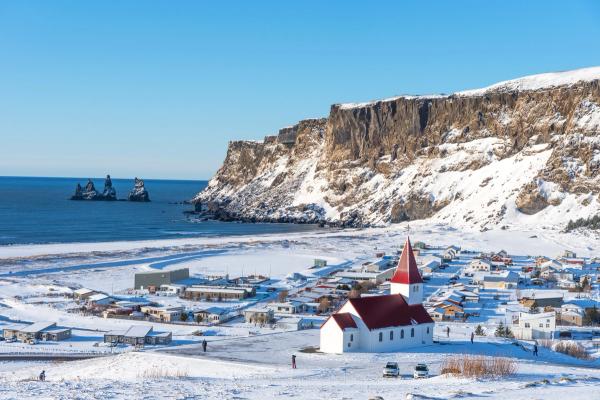
Day 4: Glacier Lagoon and Ice Caves
Continue east to Jökulsárlón Glacier Lagoon, where blue icebergs float in the lagoon and wash up on Diamond Beach. Join a guided ice cave tour in Vatnajökull National Park (book well in advance). Stay overnight in the area, as this day involves lots of driving.
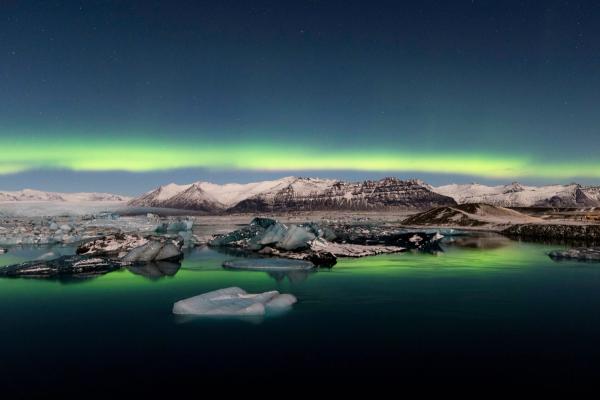
Day 5: East to North
Drive north through the Eastern Fjords, enjoying the coastal scenery, to reach the Lake Myvatn area. This region offers geothermal features, volcanic landscapes, and excellent Northern Lights viewing. Soak in the Myvatn Nature Baths and stay overnight in the area.
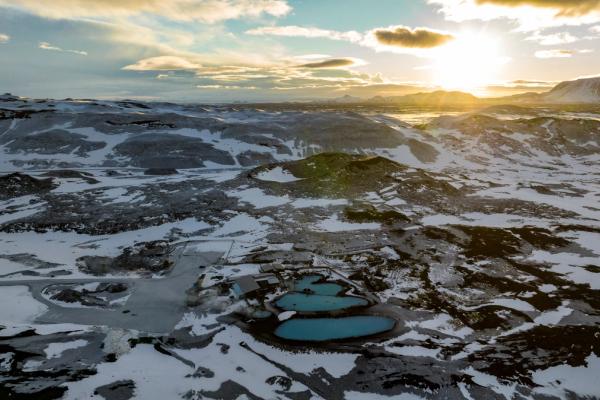
Day 6: Akureyri and Surroundings
Explore Iceland's "northern capital," Akureyri, a charming town with excellent restaurants and cultural attractions. Visit the nearby Goðafoss waterfall and consider whale watching from Húsavík (though sightings are less common in winter). Return to Akureyri for the night.
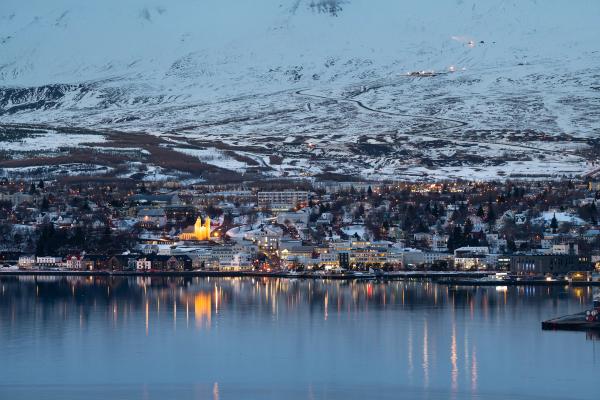
Day 7: Return to Reykjavik
You can either take a domestic flight back to Reykjavik (45 minutes) or do a scenic drive (about 4.5 hours in good conditions). If driving, plan for daylight hours and allow extra time for winter conditions. Spend your final evening enjoying Reykjavik's dining scene and perhaps the nightlife.
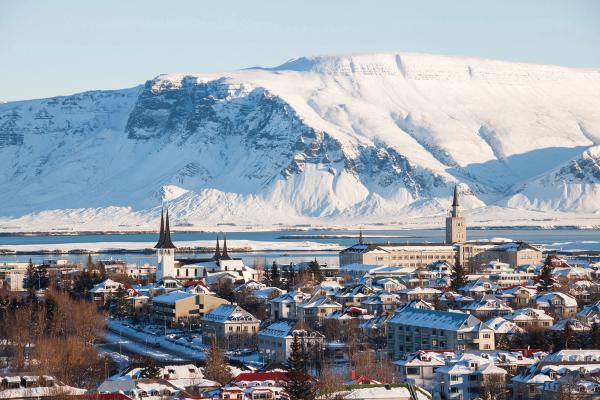
Tips
While good planning is essential for any trip, Iceland in winter requires special considerations to ensure both safety and fun. These practical tips will help you make the most of your winter adventure while avoiding common problems.
- Budget wisely: While winter is cheaper on places to stay and car rentals, tours and food are still expensive. Look for lodging with kitchen facilities to prepare some of your own meals.
- Book ice cave tours early: Ice cave tours fill up fast, sometimes months ahead.
- Pack for changing temperatures: Layering is key, as you'll frequently move between cozy interiors and cold outdoors.
- Cold drains batteries fast: Keep your phone and camera inside your coat when not using them.
- Respect weather warnings: Icelanders take weather seriously. If locals advise against travel, listen to them.
- Add extra days to your trip as a buffer against weather delays or tour cancellations.
- Stay connected: Get a local SIM card or make sure your phone plan includes coverage in Iceland for navigation and emergency communication.
- Bring swim gear: Geothermal pools are even more enjoyable in winter, so remember your swimsuit.
- Photograph the Northern Lights: Bring a tripod and learn your camera's manual settings before your trip.
- Capitalize on limited daylight: Plan indoor activities for early mornings and evenings, saving daylight hours for outdoor exploration.
Conclusion
Winter in Iceland is special. The frozen waterfalls, black beaches with snow, and green Northern Lights against dark skies make for a fantastic trip.
Winter does have its challenges —short days, changing weather, and sometimes tough driving —but the experiences make up for it. Standing on a glacier or sitting in a hot spring while it snows are things you'll remember for years.
Whether you're chasing Northern Lights, exploring ice caves, or just enjoying a warm café in Reykjavik, Iceland in winter will surprise you. Come prepared, stay flexible, and you'll see why many people think winter is the best time to visit Iceland.

